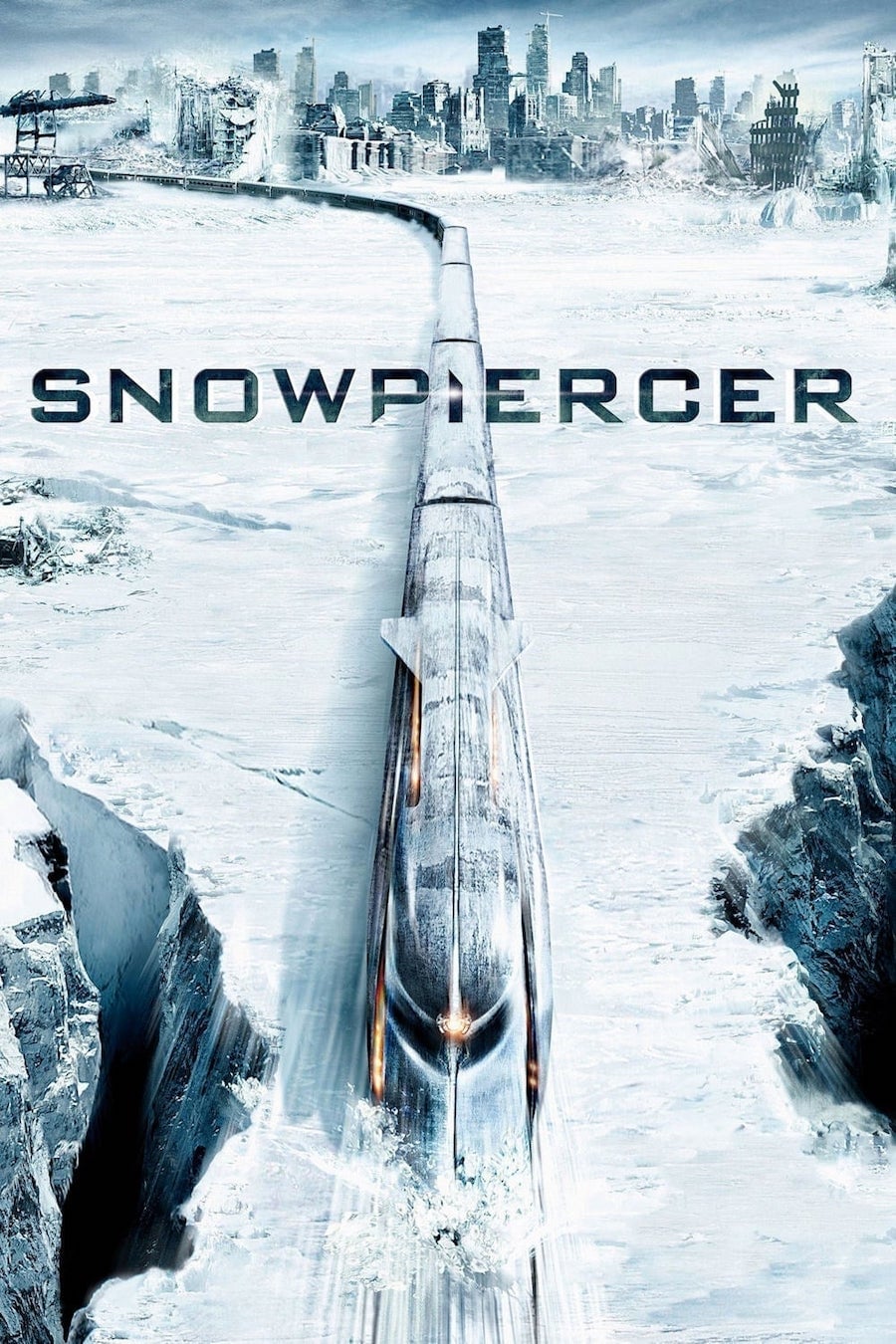
In a future where a failed global-warming experiment kills off most life on the planet, a class system evolves aboard the Snowpiercer, a train that travels around the globe via a perpetual-motion engine.
06 Dec Snowpiercer (2013)
Loco Motives
I am trying to put my finger on what I see from a few of the best Korean filmmakers. It has something to do with simultaneously seeing things more sharply than usual, with more emotional impact and at the same time having an emotional, abstract distance from the dynamics of the enclosing world.
I like this filmmaker’s work, the nonchalance about big, enveloping things and the simultaneous empathy with the human situation. Until now I only knew the human-centric projects. In this case, the world is mode more explicit, a barreling train. The idea is pure: no one on Earth still exists other than in this train. It has to keep moving, and its motion takes it weaving among the major cities of the world. The front of the train has wealthy folks, partying. The back is a slum; food is processed roaches. The story skips over how other goods and services (like toilets) are provided.
Like traditional science fiction there is an effort made by one noir-like hero to get to the front of the train and free his people, or get some parity of the wealth on board. He succeeds and there is action of the ordinary kind. Also true to the original constraints of the genre, there is a focus on social commentary, made sharp through abstraction. This is easy enough to do when simply presented the abstracted world, here a world of inequity. What’s hard is exploiting that world for dramatic value.
I have to say that Bong succeeds. It only happens in the last ten minutes and is patterned after The Man in the High Castle. After teasing our minds into fireworks-induced sleep, the notions introduced in this final minutes are pretty shocking, effective.
The end of life caused by the inequity inherent in how genius manifests. The loneliness of responsibility and the brutalities it demands. The drive for escape, a drive linked to the motion of the machine, with the escape from the machine.
Along the way, some decisions are interesting. We have a buff, determined, relatively stupid but resourceful hero that fights his way to the front. This is as usual. He is accompanied by a Korean wise man (and his adult daughter), someone who helped design the train and can ‘open doors.’ It is he that escapes, and it is easy to see him as Bong’s avatar in the film.
The second, rather disturbing feature is how women are treated here. Usually, we have one of two offensive models: the helpless but sexy victim in need of rescue, or the wicked witch. What we have here is something that seems to be most prevalent with Korea: women as parts of the social machine. Never in real power, but they have their hands on all the buttons.
We have 5 women here; you will find none of them in a western action movie.
We have the Korean daughter. She is a drug addict with her father and minor partner in the effort to get to the locomotive. She is mostly passive.
We have a mother whose child is stolen. He, it turns out was selected because of his size, allowing him to fit inside the propulsive machine to lubricate bits. He is actual noir character, so indirectly is his mother. She is African-American.
Another woman is the loyal assistant to the boss, something like butler crossed with bodyguard and (train) fireman. She is stern, stout and empty.
A fourth is an amazing character, a teacher/brainwasher of children aboard the train. Perky, the ultimate girl next door. Wildly enthusiastic cheerleader for the established order.
But the final woman is the oddest and has the most screen time, played by master actress Tilda Swinton. She is the ‘minister’ of the whole show. An enforcer of course, but also the organiser of everything save the propulsive force reserved for the ultimate male. She plays a cartoon. Everyone here is a cartoon of course. But she also plays a schemer, the only person on the train, it seems, that has control over her destiny.
We assume also that she is the only woman from the front of the train not incidentally employed in reproduction. She has a uniform, medals. The scope here isn’t as broad as allowed in Young Adam, but is along the same lines.
Posted in 2015
Ted’s Evaluation — 3 of 3: Worth watching.


No Comments